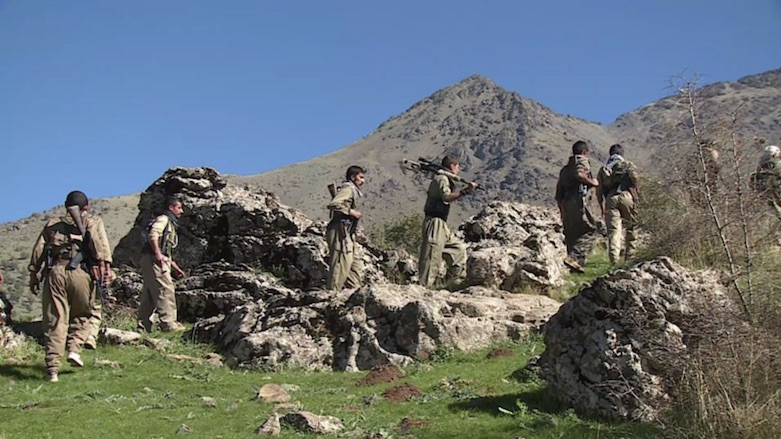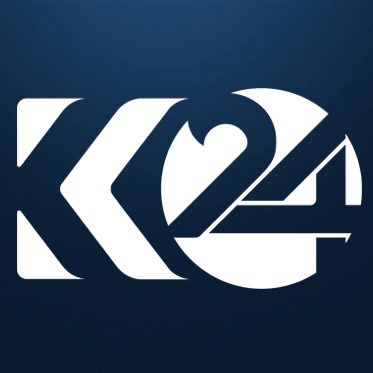Iran Guard troops killed in new clashes with Kurdish opposition group: Monitor

ERBIL (Kurdistan 24) – Members of Iran’s Islamic Revolutionary Guard Corps (IRGC) and fighters of a suspected Kurdish opposition group clashed in a rural area in the western Kurdistan province on Tuesday. Reports indicate casualties on both sides in a new armed confrontation, the frequency which appears to have declined over the past year.
The latest incident occurred near Sha-Qalla village, in Kurdistan province’s Divandarreh (Diwandara) county, said a Tuesday report by local watchdog Hengaw, which documents human rights violations of Iran’s Kurdish population, as well as clashes between Iranian security forces and Kurdish opposition groups.
Sha-Qalla is about 65 kilometers (40 miles) north-northwest of Kurdistan province capital of Sanandaj (Sina) and close to 28 kilometers (17 miles) east of the national border of the Kurdistan Region of Iraq. It is also situated near the Chehel-Cheshme mountain range.
The exchange led to the killing of three IRGC members, including a ranking commander by the name of Shakiba Salimi, according to state-affiliated media outlet Tasnim. The Hengaw report confirmed the three deaths and also cited sources as saying five more soldiers had been wounded.
The Tasnim report claimed the IRGC unit killed several fighters in a “counter-revolutionary” group, a term Tehran uses for its opponents and groups it considers terrorists.
No group has claimed involvement in the confrontation, as has been the norm in recent incidents. Armed wings of groups advocating human and political rights for the Kurdish people residing in the western part of Iran have long been active in rural, mountainous areas near the border with the Kurdistan Region. Ilam, Kermanshah (Kermashan), Kurdistan, and West Azerbaijan provinces are majority Kurdish and collectively referred to as Eastern Kurdistan or Rojhilat in Kurdish.
In 2020, an armed group going by the name of Zagros Falcons has carried out three operations against Iranian government forces in Kurdistan’s Baneh county, killing one IRGC member and wounding three others, one informed source told Kurdistan 24 on Wednesday.
The Zagros Falcons is affiliated with the Democratic Party of Iranian Kurdistan (PDKI), which has not officially claimed responsibility for any of the attacks. A separate, unclaimed incident occurred in the Paveh county of Kermashan, leading to the death of one IRGC member, according to an early March Hengaw report.
July 2019 witnessed a notable increase in clashes between Kurdish groups and Iranian forces, but a large IRGC response precipitated a significant decline in activities over the past year. Still, sporadic incidents have taken place across different parts of Rojhilat.
Read More: Iran says IRGC killed 'large number' of fighters based in Kurdistan Region
In recent years, PDKI and Kurdistan Free Life Party (PJAK)-affiliated armed units based in rural Rojhilat have been most active in Iran against IRGC forces, the informed source explained to Kurdistan 24. Though there has been a recent decline, the trend is upward, they noted.
Following the Tuesday incident, local authorities in Diwandara county organized a massive funeral procession for the military personnel, before burying them, despite the lingering threat of the new coronavirus.
Related Article: 'At least' 300 COVID-19 deaths in Iranian Kurdistan; more than double reported by Tehran: Report
In September 2018, the IRGC launched what it claimed was a cross-border operation in which it used land-to-land missiles across a 220-kilometer distance to target the headquarters of the Kurdistan Democratic Party (KDP-Iran) and the Democratic Party of Iranian Kurdistan (PDKI) outside the town of Koya, in Erbil province of the Kurdistan Region. The attack killed 15 and injured 42 more.
Iran, which was the regional epicenter and exporter of the disease to neighboring countries in March, has officially reported over 100,000 infections and close to 6,500 deaths.
A belated and limited response to curb the spread of the virus and a seemingly early lifting of containment measures appears to have put the country at risk of a second wave rapid transmission. Its official numbers, too, have come under scrutiny.
Late last year, Iranians launched yet another series of demonstrations against the Iranian government, which speedily suppressed the movement, with estimates on the death count going as high as 1,500. Although the authorities have rejected that number, they have not reported any official data on the number of casualties.
Related Article: Iranian protesters take to the streets to condemn downing of civilian aircraft
Editing by John J. Catherine

